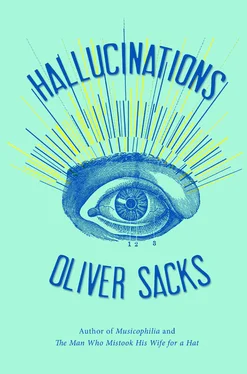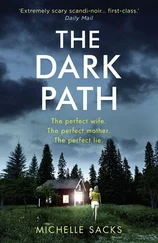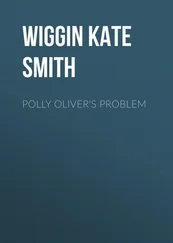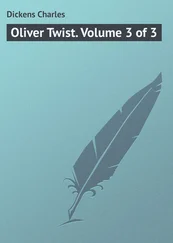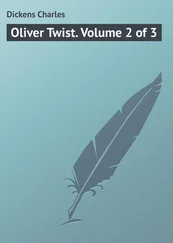Blodgett, Bonnie. 2010. Remembering Smell: A Memoir of Losing — and Discovering — the Primal Sense . New York: Houghton Mifflin Harcourt.
Blom, Jan Dirk. 2010. A Dictionary of Hallucinations . New York: Springer.
Blom, Jan Dirk, and Iris E. C. Sommer, eds. 2012. Hallucinations: Research and Practice . New York: Springer.
Bonnet, Charles. 1760. Essai analytique sur les facultés de l’âme . Copenhagen: Freres Cl. & Ant. Philibert.
Boroojerdi, Babak, Khalaf O. Bushara, Brian Corwell, Ilka Immisch, Fortunato Battaglia, Wolf Muellbacher, and Leonardo G. Cohen. 2000. Enhanced excitability of the human visual cortex induced by short-term light deprivation. Cerebral Cortex 10: 529–34.
Botvinick, Matthew, and Jonathan Cohen. 1998. Rubber hands “feel” touch that eyes see. Nature 391: 756.
Brady, John Paul, and Eugene E. Levitt. 1966. Hypnotically induced visual hallucinations. Psychosomatic Medicine 28 (4): 351–63.
Brann, Eva. 1993. The World of the Imagination: Sum and Substance . Lanham, MD: Rowman & Littlefield.
Brewin, Chris, and Steph J. Hellawell. 2004. A comparison of flashbacks and ordinary autobiographical memories of trauma: Content and language. Behaviour Research and Therapy 42 (1): 1–12.
Brierre de Boismont, A. 1845. Hallucinations; or, The Rational History of Apparitions, Visions, Dreams, Ecstasy, Magnetism and Somnambulism . First English edition, 1853. Philadelphia: Lindsay and Blakiston.
Brock, Samuel. 1928. Idiopathic narcolepsy, cataplexia and catalepsy associated with an unusual hallucination: A case report. Journal of Nervous and Mental Disease 68 (6): 583–90.
Brugger, Peter. 2012. Phantom limb, phantom body, phantom self. A phenomenology of “body hallucinations.” In Hallucinations: Research and Practice , ed. Jan Dirk Blom and Iris E. C. Sommer. New York: Springer.
Brugger, Peter, R. Agosti, M. Regard, H. G. Wieser, and T. Landis. 1994. Heautoscopy, epilepsy, and suicide. Journal of Neurology, Neurosurgery and Psychiatry 57: 838–39.
Burke, William. 2002. The neural basis of Charles Bonnet hallucinations: A hypothesis. Journal of Neurology, Neurosurgery and Psychiatry 73: 535–41.
Carlson, Laurie Winn. 1999. A Fever in Salem: A New Interpretation of the New England Witch Trials . Chicago: Ivan R. Dee.
Cheyne, J. Allan. 2001. The ominous numinous: Sensed presence and “other” hallucinations. Journal of Consciousness Studies 8 (5–7): 133–50.
— 2003. Sleep paralysis and the structure of waking-nightmare hallucinations. Dreaming 13 (3): 163–79.
Cheyne, J. Allan, Steve D. Rueffer, and Ian R. Newby-Clark. 1999. Hypnagogic and hypnopompic hallucinations during sleep paralysis: Neurological and cultural construction of the night-mare. Consciousness and Cognition 8 (3): 319–37.
Chodoff, Paul. 1963. Late effects of the concentration camp syndrome. Archives of General Psychiatry 8 (4): 323–33.
Cogan, David G. 1973. Visual hallucinations as release phenomena. Albrecht von Graefes Archiv für klinische und experimentelle Ophthalmologie 188 (2): 139–50.
Cole, Jonathan, Oliver Sacks, and Ian Waterman. 2000. On the immunity principle: A view from a robot. Trends in Cognitive Sciences 4 (5): 167.
Cole, Jonathan, Simon Crowle, Greg Austwick, and David Henderson Slater. 2009. Exploratory findings with virtual reality for phantom limb pain; from stump motion to agency and analgesia. Disability and Rehabilitation 31 (10): 846–54.
Cole, Monroe. 1999. When the left brain is not right the right brain may be left: Report of personal experience of occipital hemianopia. Journal of Neurology, Neurosurgery and Psychiatry 67: 169–73.
Critchley, Macdonald. 1939. Neurological aspect of visual and auditory hallucinations. British Medical Journal 2 (4107): 634–39.
— 1951. Types of visual perseveration: “Paliopsia” and “illusory visual spread.” Brain 74: 267–98.
— 1967. Migraine: From Cappadocia to Queen Square. In Background to Migraine , ed. Robert Smith. London: William Heinemann.
Daly, David. 1958. Uncinate fits. Neurology 8: 250–60.
Davies, Owen. 2003. The nightmare experience, sleep paralysis, and witchcraft accusations. Folklore 114 (2): 181–203.
Davis, Wade. 2011. Into the Silence: The Great War, Mallory, and the Conquest of Everest . New York: Knopf.
de Morsier, G. 1967. Le syndrome de Charles Bonnet: Hallucinations visuelles des vieillards sans déficience mentale. Annales Médico-Psychologiques 125: 677–701.
Dening, T. R., and German E. Berrios. 1994. Autoscopic phenomena. British Journal of Psychiatry 165: 808–17.
De Quincey, Thomas. 1822. Confessions of an English Opium-Eater . London: Taylor and Hessey.
Descartes, René. 1641/1960. Meditations on First Philosophy . New York: Prentice Hall.
Devinsky, Orrin. 2009. Norman Geschwind: Influence on his career and comments on his course on the neurology of behavior. Epilepsy & Behavior 15 (4): 413–16.
Devinsky, Orrin, and George Lai. 2008. Spirituality and religion in epilepsy. Epilepsy & Behavior 12 (4): 636–43.
Devinsky, Orrin, Edward Feldman, Kelly Burrowes, and Edward Bromfield. 1989. Autoscopic phenomena with seizures. Archives of Neurology 46 (10): 1080–88.
Devinsky, O., L. Davachi, C. Santchi, B. T. Quinn, B. P. Staresina, and T. Thesen. 2010. Hyperfamiliarity for faces. Neurology 74 (12): 970–74.
Dewhurst, Kenneth, and A. W. Beard. 1970. Sudden religious conversions in temporal lobe epilepsy. British Journal of Psychiatry 117: 497–507.
Dewhurst, Kenneth, and John Pearson. 1955. Visual hallucinations of the self in organic disease. Journal of Neurology, Neurosurgery, and Psychiatry 18: 53–57.
Dickens, Charles. 1861. Great Expectations . London: Chapman and Hall.
Dostoevsky, Fyodor M. 1869/2002. The Idiot . New York: Everyman’s Library
— 1846/2005. The Double and The Gambler . New York: Everyman’s Library.
Draaisma, Douwe. 2009. Disturbances of the Mind . New York: Cambridge University Press.
Ebin, David, ed. 1961. The Drug Experience: First-Person Accounts of Addicts, Writers, Scientists and Others . New York: Orion.
Efron, Robert. 1956. The effect of olfactory stimuli in arresting uncinate fits. Brain 79 (2): 267–81.
Ehrsson, H. Henrik. 2007. The experimental induction of out-of-body experiences. Science 317 (5841): 1048.
Ehrsson, H. Henrik, Charles Spence, and Richard E. Passingham. 2004. That’s my hand! Activity in the premotor cortex reflects feeling of ownership of a limb. Science 305 (5685): 875–77.
Ehrsson, H. Henrik, Nicholas P. Holmes, and Richard E. Passingham. 2005. Touching a rubber hand: Feeling of body ownership is associated with activity in multisensory brain areas. Journal of Neuroscience 25 (45): 10564–73.
Ellis, Havelock. 1898. Mescal: A new artificial paradise. Contemporary Review 73: 130–41 (reprinted in the Smithsonian Institution Annual Report 1898, pp. 537–48).
Escher, Sandra, and Marius Romme. 2012. The hearing voices movement. In Hallucinations: Research and Practice , ed. Jan Dirk Blom and Iris E. C. Sommer. New York: Springer.
Fénelon, Gilles, Florence Mahieux, Renaud Huon, and Marc Ziégler. 2000. Hallucinations in Parkinson’s disease: Prevalence, phenomenology and risk factors. Brain 123 (4): 733–45.
ffytche, Dominic H. 2007. Visual hallucinatory syndromes: Past, present, and future. Dialogues in Clinical Neuroscience 9: 173–89.
Читать дальше
